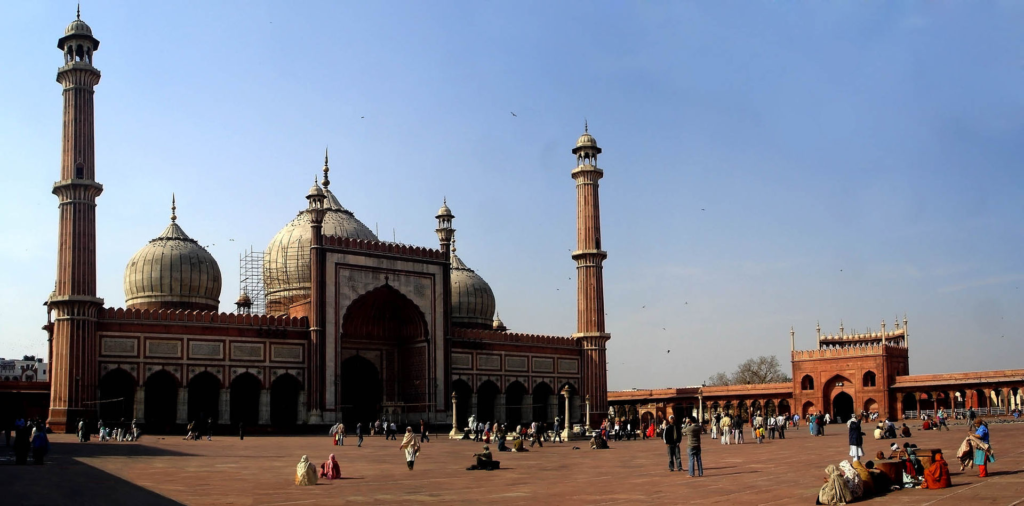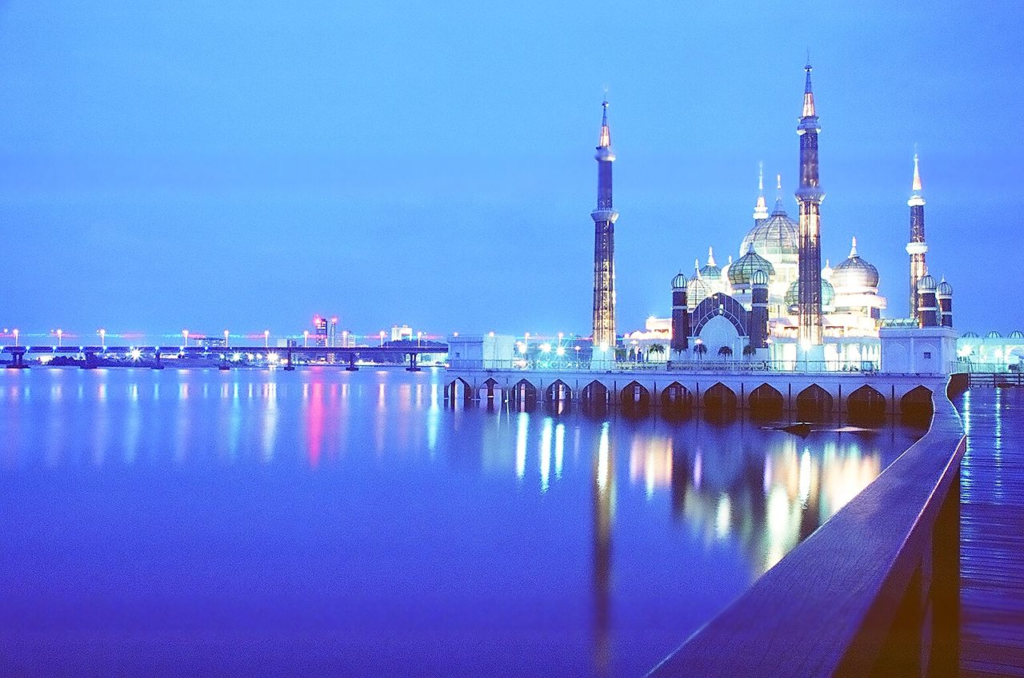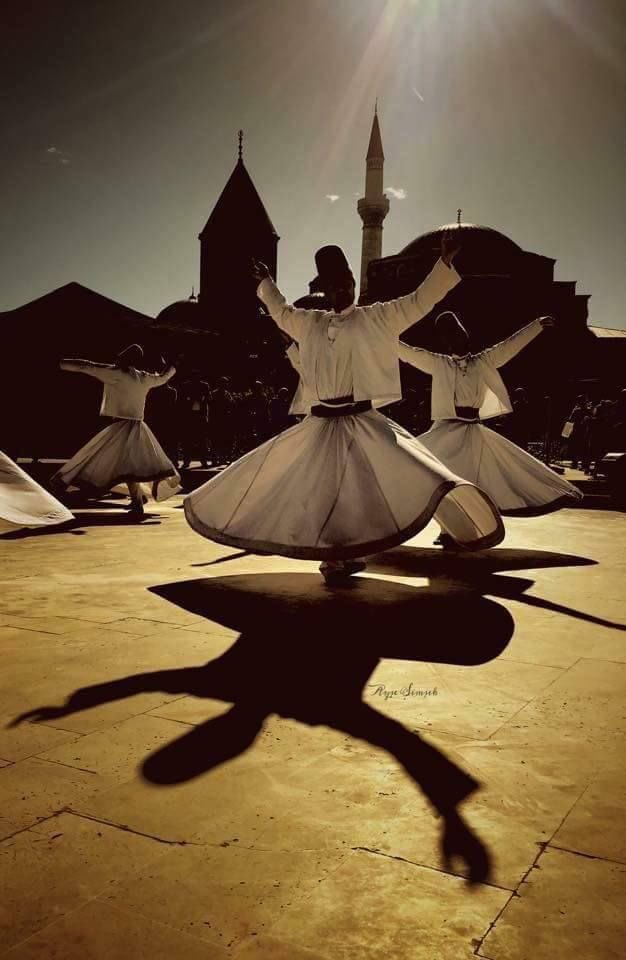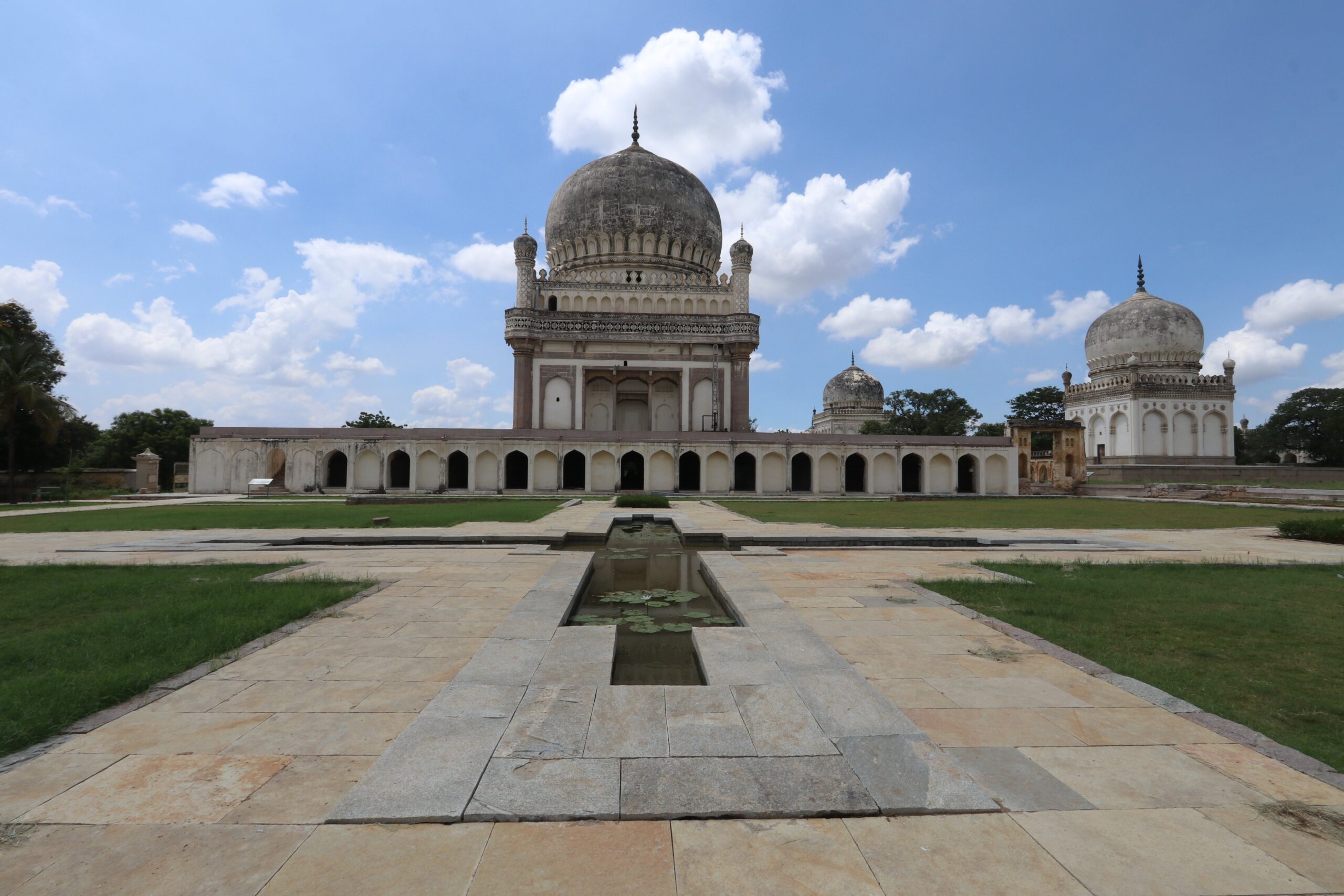Mosques in Islam don’t represent Muslim only religiosity, they are also exquisite centres of culture, architectural exhibition and sometimes also representative of state writ. Thousands of historical masjids (mosques) are scattered around the world and they come to life especially during the holy month of Ramadan. They are well decorated for devotees and visitors and remain points of attraction and activities throughout the month. During the month of Ramadan, mosques, with their beauty and brimming spirituality, are the best place to spend some time and soak in the devotion that flows in the premises. Devotees and pilgrims offer prayers to Allah and seek forgiveness, prosperity and rewards. The magnificent architecture and aesthetics put them high on the places-to-see list of devout Muslims, travellers, architects, and historians, among others.
Here is a look at some of world’s most famous and grandest mosques:
Masjid Al-Haram, Saudi Arabia
Also known as the Grand Mosque, Masjid Al-Haram is one of the most important masjids in Islam. It is the largest masjid in the world, with a capacity to hold up to four million worshippers during Ramadan. The masjid is home to the Kaaba, the holiest site in Islam, and its history dates back to the time of Prophet Ibrahim.

Spread over an area of 400,800 sqm, the Al-Haram mosque is not just the largest Islamic shrine but prettiest among the most beautiful mosques in the world. It is one of the most prominent places of worship globally, visited annually by millions of people for Hajj and Umrah rituals. It is mentioned in the holy book of the Quran as the first place built for worshipping Allah. It is also known as the forbidden mosque as fighting is forbidden in its vicinity. It has other significant sites in Islam, such as Maqam Ibrahim and Zamzam well. The hills of Safa and Marwa are also situated within the premises of the mosque. Since it was built, Al-Haram or the forbidden mosque is continuously expanding to accommodate more and more pilgrims.
Masjid al-Nabawi, Saudi Arabia
Masjid al Nabawi is the second holiest mosque in Islam, the second largest mosque in the world after the Masjid al-Haram in Mecca. It is the resting place of the Prophet Muhammad. It was built by the Prophet himself, next to the house where he settled after his migration to Medina in 622 AD. It was an open air building with a raised platform for the reading of the Quran. The mosque has been extended over the years, the latest being in the mid 1990s. One of the most notable features of the site is the green dome over the centre of the mosque, where the tomb of Prophet Muhammad and early Islamic caliphs Abu Bakr and Umar are located.

Al-Aqsa Mosque, Jerusalem, Palestine
Al-Aqsa Mosque, meaning “the farthest mosque” or “extreme mosque”, is the mosque, according to the Quran, to which Prophet Muhammad (SAW) arrived on his night journey riding his miraculous animal “Al-Burak” from Mecca. According to believers, this is where he ascended to heaven with the angel Gabriel after leaving his footprint on the stone.

The mosque can accommodate about 5,000 worshippers. Al-Aqsa Mosque, which has the structure of a Byzantine basilica, has undergone many transformations, demolitions, and renovations. Initially, it was built of wood by Caliph Umar, and only after a few years, it was made of stone by the fifth successor to the Umayyad house, Abd al-Malek. It is built of several architectural styles combined. The exact date of its establishment is unknown, but it was built to serve as a place of prayer for many Muslim pilgrims, and it is estimated that it has existed for over 1,500 years. During the month of Ramadan, it comes to boisterous life as Palestinians throng to clean and attend prayers in its compound. Almost every year, Israeli forces cordon off and resort to firing to dissuade praying Palestinians and the site turns into the epicentre of violent clashes.
The Hagia Sophia, Istanbul
The Hagia Sophia mosque is a must-visit site for all Muslims not only for its unparalleled beauty but for its significant history. One of the most beautiful mosques in the world, this sacred place is a surviving example of Byzantine architecture. It was originally built as a Christian church, however during Ottoman rule (1453-1935), it was converted into a mosque. The building shows the religious transformations that the mosque has seen in the past. It has long minarets and inscriptions in Arabic relating to the Muslim culture while the beautiful mosaics tell about the storied Christians past.

Sultan Ahmed Mosque or Blue Mosque, Istanbul
Also known as Blue Mosque because of the Blue Iznik tiles that adorn its interiors, Sultan Ahmed Mosque is an awe-inspiring sight. The mosque dates back to the 17th century when it was constructed under the rule of Ahmed I. This structure featuring six high-rising minarets and five main domes is believed to be the last great mosque of the classical era.

Jama Masjid, Delhi
Located in New Delhi, Jama Masjid that was built by the Mughal emperor Shah Jahan between 1650 and 1656 is the largest mosque in India. This place of worship has a capacity for allowing 25,000 worshippers and is made from red sandstone and white marble. Featuring Indo-Islamic architecture, the mosque has three domes, two minarets, and three gates and is deserving of a spot in the top 10 most beautiful mosques in the world.

The mosque’s architecture is inspired from the hindi and jain religion spread as the majority in the country. It was completed by around 5000 labourers working day and night to build the mosque at 1 million rupees at that time. The month of Ramadan is very special in the mosque and the area surrounding it. With devotees opening fasts in the mosque premises, the area brims with activities and culinary aroma fills the whole Old Delhi. Even those who do not fast descend to the place to taste the spiritual ambience that remains alive the whole night.
Nasir al-Mulk or Pink Mosque, Shiraz, Iran
Nicknamed the Pink Mosque, Nasir al-Mulk Mosque is located in Iran’s old city of Shiraz. It was built during the Qajar period (1789-1925) by the order of Mirza Hassan Ali Khan Nasir al-Mulk, the son of one of the Persian rulers of the period.
The incredible play of dazzling lights streaming in through the stained glass windows welcome guests into a kaleidoscope of colours right from the beginning. Try visiting early in the morning to witness this incredible show of lights and colours in shades of red, azure, yellow, orange and green.

The entrance porch is covered in colourful tiles in shades of blue, yellow, pink, azure and white. When coupled with the grand wooden door of the facade, it makes up for an entrance like no other. Another unique feature of this marvellous architecture is the two shabestan (an underground space that can be usually found in the traditional architecture of mosques) on the eastern and western sides.
The western shabestan is connected to the beautiful courtyard of the mosque by seven wooden gates. These doors wear the art of Gereh Chini (Trelliswork) and pieces of coloured glass.
Bibi-Khanym Mosque, Uzbekistan
The great mosque is an architectural beauty in the ancient city of Samarkand. Built between 1399 and 1404, the mosque is named after Mongol leader Timur’s wife. The construction began after Timur’s successful campaign in India.
The mosque was designed to be a sight of beauty and grandeur such that it would eclipse all other sites that Timur had ever seen. With such an ambition, hundreds of architects, craftsmen, artists and artisans from all over the East were brought in for the construction of the building.
Measuring about 130 x 102 square metres, the mosque can hold over 10,000 people at a time. On the western side of the courtyard is the main mosque, or jami, while many smaller mosques lace the northern and southern ends.

Decorated with marble tiles, this courtyard itself is a beauty to behold. The entrance is decorated as a high portal with two round minarets of 50 metres in height each. The facade of the mosque is lined with a grand portal and two minarets. The walls wear glazed bricks with large Arabic letters. The impeccable blue domes make the mosque one of the most stunning examples of the Persian style of architecture in the world.
Crystal Mosque, Malaysia
Sitting majestically in Kuala Terengganu’s Wan Man Island, the Crystal Mosque is a unique example of futuristic modern style and elegance. Built in 2008, the mosque structure is coated with steel, glass and crystal. It is the first mosque in the world to have solar panels, WiFi connection and electronic Qurans.
The surrounding waters seem to be the muse for the mosque’s exterior as the steel and glass shimmer and reflect the river it overlooks. The sleek and modern appearance gets even more heightened when the building is illuminated from within in the evening., turning the place into a dazzling spectacle. One of the excellent examples of modern-day architecture, the mosque is sure to turn heads with its intricately decorated interiors.

The Crystal Mosque in Malaysia also displays replicas of other famous mosques such as the Taj Mahal, Masjid al-Haram, Aleppo Citadel and Al-Hambra Mosque. As part of the Islamic Heritage Park the mosque and its surroundings often become the choicest location for photoshoots.
Putra Mosque, Malaysia
Located in Putrajaya, Malaysia’s administrative capital, Putra Mosque is a modern masjid that blends traditional and contemporary elements. Its design is inspired by Iranian architecture, with a pink granite facade and a stunning blue dome. The masjid is also surrounded by a beautiful man-made lake.

Masjid Sultan, Singapore
Masjid Sultan is a historic masjid located in Singapore’s Arab Street district. It was built in the mid-1800s and features a beautiful blend of Arab, Islamic, and European architectural styles. The masjid is known for its stunning golden dome and intricate tile work.

Sheikh Zayed Grand Mosque, UAE
The Sheikh Zayed Grand Mosque in Abu Dhabi is a stunning example of modern Islamic architecture. With 82 gleaming white domes, several beautiful hand-knotted carpets, and many Swarovski-covered chandeliers, Sheikh Zayed Grand Mosque definitely deserves a spot among the most beautiful mosques in the world. It is an architectural marvel with a capacity for allowing more than 40,000 worshippers at one time. Also, it has a pool that reflects the mosque columns and looks charming during the night time. The mosque has 1096 columns embedded with amethyst and jasper. Further, it has the prized owner of Guinness Book of World Records for housing the largest hand woven carpet. The mosque has calligraphic writings on the walls and arches encouraging the Muslims to maintain patience and spread peace.

Umayyad Mosque in Damascus, Syria
The beautiful mosque that has stood the test of times since it was completed over 1000 years ago in 715. It features three high-rising domes and a large courtyard where several Muslims gather every day to offer prayers. Interestingly, the mosque is believed to have a shrine that holds the head of John Baptist, a Jewish itinerant preacher from the early 1st century AD, also known as Prophet John (Yaḥya) in Islam.

Sultan Qaboos Grand Mosque in Muscat, Oman
Designed to accommodate up to 20,000 worshippers, Sultan Qaboos Grand Mosque in Oman is a beautiful place of worship. It was opened in 2001 and was built to celebrate 30 years of rule by Qaboos bin Said Al Said, the Sultan of Oman. The mosque features five minarets representing five pillars of Islam and has colourful mosaic patterns and fine crystal work that make it one of the most beautiful mosques in the world.

Islamic Centre Mosque in Rijeka, Croatia
This mosque is a beautiful amalgamation of contemporary and traditional Islamic art. Featuring curved geometric shapes and patterns, the mosque has a uniquely styled dome, shaped in five separate parts that visually make a single object. The Islamic Centre Mosque was designed by the well-known Croatian sculptor, Dusan Dzamonja. A popular tourist site today, the mosque was built as a result of years-old aspiration of the Islamic community of Rijeka to have a dedicated space for offering prayers.






